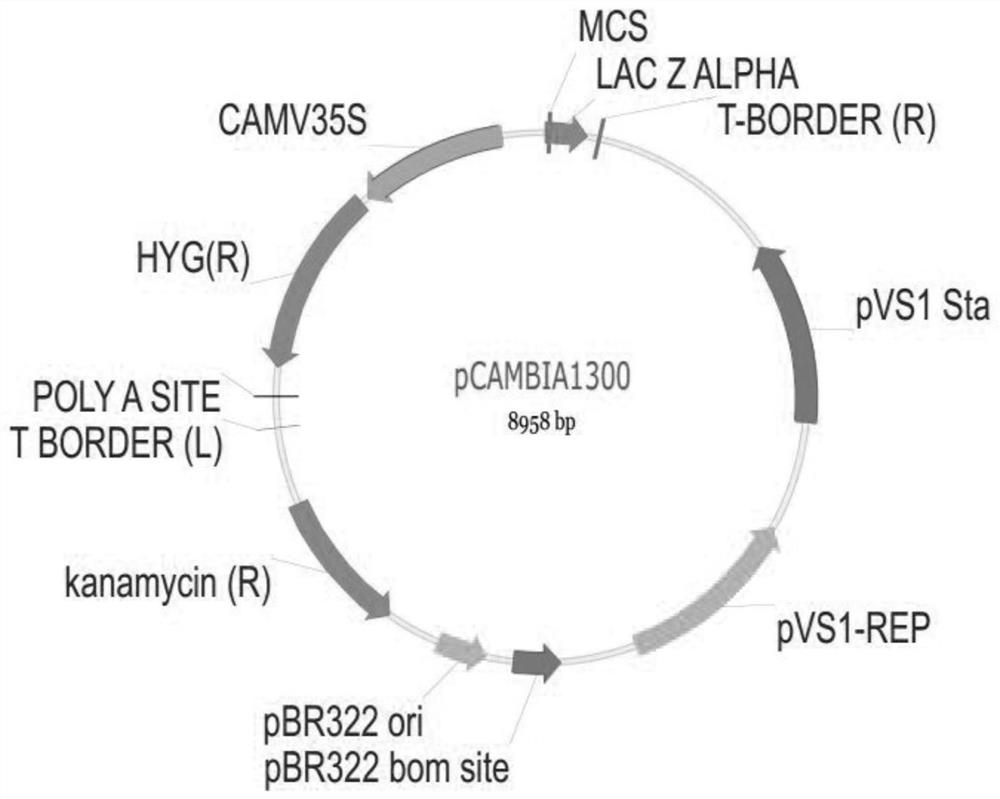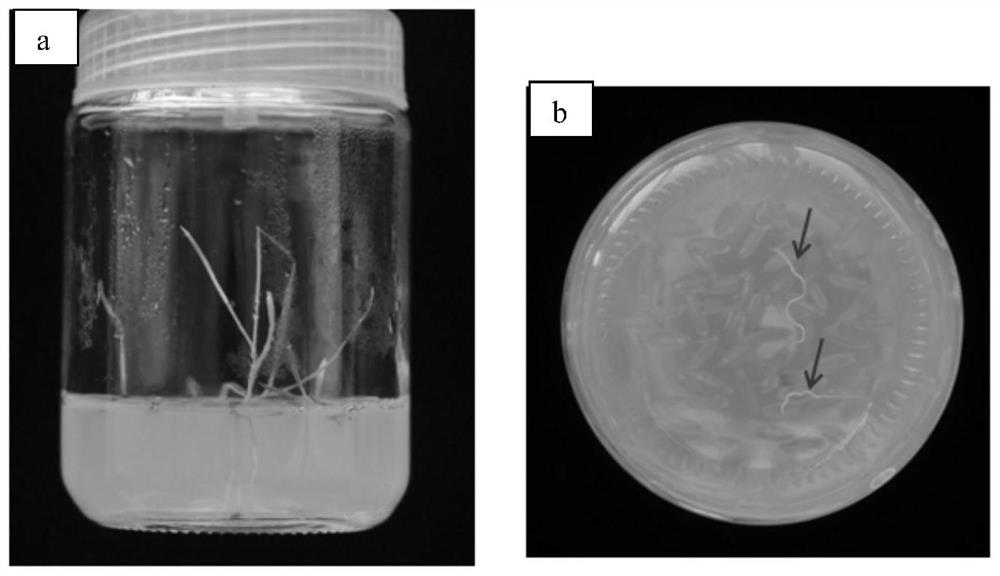A method for genetically transforming Brachypodium distachyon by inflorescence dipping
A technology of Brachypodium distachyon and genetic transformation, applied in biochemical equipment and methods, using vectors to introduce foreign genetic material, botanical equipment and methods, etc., capable of solving problems such as somatic cell mutation
- Summary
- Abstract
- Description
- Claims
- Application Information
AI Technical Summary
Problems solved by technology
Method used
Image
Examples
Embodiment 1
[0050] 1. Transformation of Agrobacterium and identification of positive clones
[0051] Add the hygromycin resistance gene (HYG R ), the nucleotide sequence is shown in SEQ ID NO.3) plasmid DNA (pCAMBIA1300, the map is as shown in figure 1 Shown) 0.1-1μg, then ice-bath for 30min; put in liquid nitrogen for 5min, then immediately put in 37℃ water bath for 5min; take out the centrifuge tube, ice-bath for 2-5min, add 0.5ml YEB liquid medium, 28℃, 220rpm Shake the culture for 3-5 hours; take out the bacterial solution and apply it on the YEB solid medium containing the corresponding antibiotics kanamycin and rifampicin (both at a concentration of 50mg / L), and incubate it upside down at 28°C for 2-3 days in an incubator; Take a single colony and do colony PCR identification. The PCR system is: in a 20μL reaction system, Taq DNA polymerase 1.0U, dNTP 0.25μmol / L, primer 0.5μmol / L, 50ng template DNA; PCR reaction program: 94℃ Pre-denatured for 5 minutes, denatured at 94°C for 30s, ...
PUM
 Login to View More
Login to View More Abstract
Description
Claims
Application Information
 Login to View More
Login to View More - R&D
- Intellectual Property
- Life Sciences
- Materials
- Tech Scout
- Unparalleled Data Quality
- Higher Quality Content
- 60% Fewer Hallucinations
Browse by: Latest US Patents, China's latest patents, Technical Efficacy Thesaurus, Application Domain, Technology Topic, Popular Technical Reports.
© 2025 PatSnap. All rights reserved.Legal|Privacy policy|Modern Slavery Act Transparency Statement|Sitemap|About US| Contact US: help@patsnap.com



